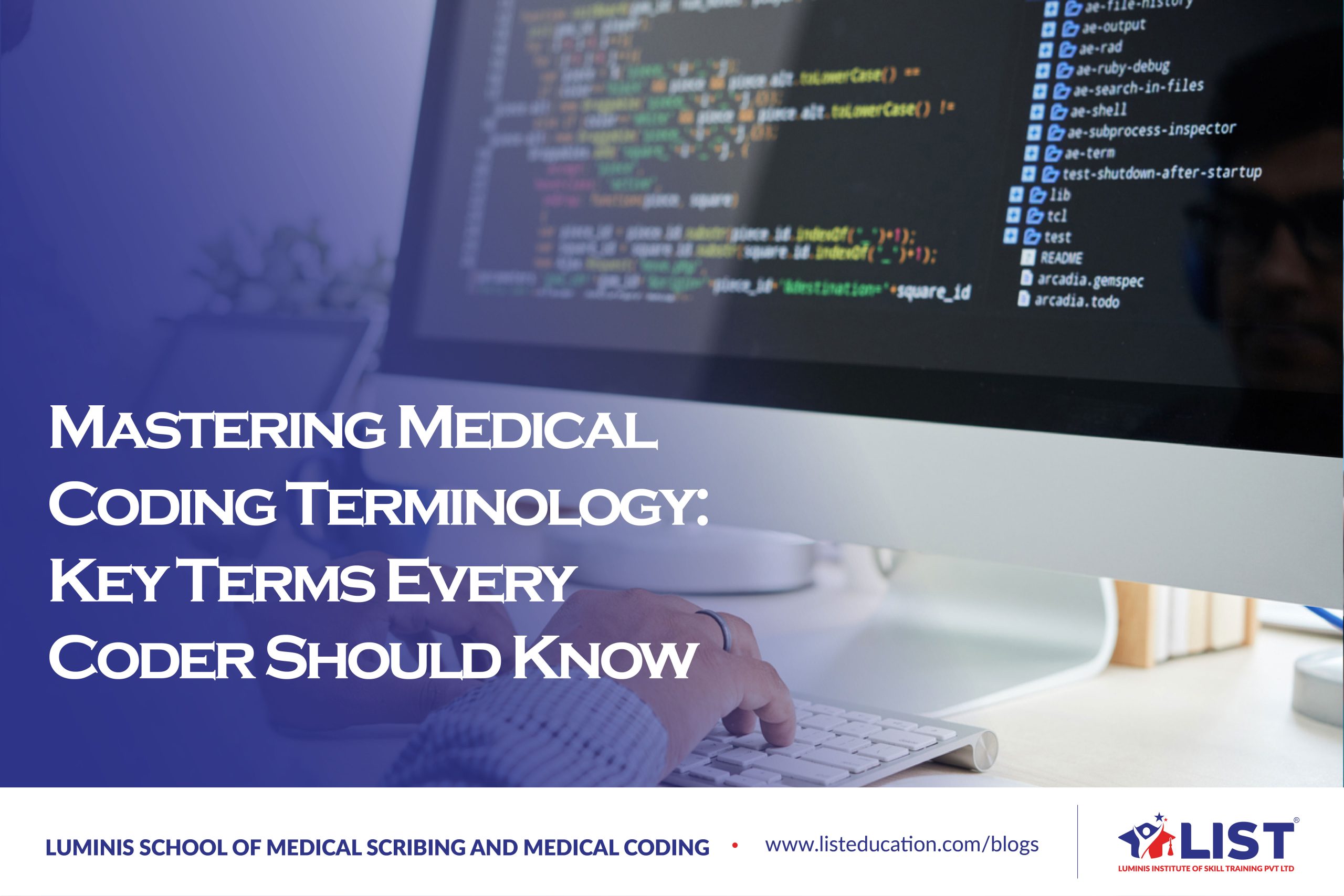
Mastering Medical Coding Terminology: Key Terms Every Coder Should Know
Discover the essential medical coding terminology every professional coder should be familiar with. Improve your coding skills and advance your career.
Introduction
As a medical coder, having a strong command of the relevant terminology is crucial for accurate documentation, efficient medical billing, and successful career advancement. In this comprehensive blog post, we’ll explore the key medical coding terms that every coder should know to excel in their field.
1. ICD-10-CM (International Classification of Diseases, 10th Revision, Clinical Modification)
ICD-10-CM is the standard diagnostic coding system used in the United States for classifying and reporting medical conditions and diseases. Implemented in 2015, ICD-10-CM is a significant upgrade from the previous ICD-9-CM system, featuring greater specificity, clinical accuracy, and the ability to capture more detailed information about patient diagnoses.
Understanding the structure, coding guidelines, and application of ICD-10-CM is foundational for accurate medical coding. Coders must be familiar with the ICD-10-CM coding manual, which is organized into 21 chapters based on anatomical systems and etiologies. Mastering the guidelines for code selection, sequencing, and documentation is essential for avoiding coding errors and ensuring appropriate reimbursement.
2. CPT (Current Procedural Terminology)
CPT codes are a set of medical procedure codes used to report and bill medical, surgical, and diagnostic services. Developed and maintained by the American Medical Association (AMA), the CPT coding system is widely used by healthcare providers, payers, and coders to describe the services and procedures performed during a patient encounter.
Familiarity with the CPT coding system, including its structure, guidelines, and modifiers, is essential for medical coders. Coders must be able to accurately select the appropriate CPT code(s) based on the documentation provided, taking into account factors such as the nature of the service, the anatomical location, and the complexity of the procedure.
3. HCPCS (Healthcare Common Procedure Coding System)
HCPCS is a collection of codes that represent products, supplies, and services not included in the CPT coding system, such as durable medical equipment, ambulance services, and some drugs. Divided into two levels, HCPCS Level I codes correspond to the CPT codes, while HCPCS Level II codes are used to identify products, supplies, and services not found in the CPT system.
Knowing when and how to apply HCPCS codes is crucial for comprehensive medical coding. Coders must be familiar with the HCPCS coding manual, including the guidelines for code selection and the appropriate use of modifiers, to ensure accurate reporting and billing.
4. Modifiers
Modifiers are two-digit codes that provide additional information about a procedure or service, such as the anatomical location, the approach used, or the circumstances under which a service was provided. Modifiers can significantly impact reimbursement, as they can indicate the need for increased or decreased payment, or the application of certain billing rules.
Understanding modifier usage is key for accurate code assignment and billing. Coders must be well-versed in the appropriate application of modifiers, as well as the specific guidelines and requirements for each modifier, to ensure compliance and maximize reimbursement.
5. Evaluation and Management (E/M) Codes
E/M codes are used to report the level of care provided during an office visit, hospital stay, or other healthcare encounter. These codes are divided into several categories, such as new patient visits, established patient visits, and consultations, and are further stratified based on the complexity of the service provided.
Mastering the guidelines and documentation requirements for E/M code selection is vital for medical coders. Coders must be able to accurately assess the components of a patient encounter, such as the history, examination, and medical decision-making, to determine the appropriate E/M code and ensure proper reimbursement.
6. Diagnosis-Related Groups (DRGs)
DRGs are a patient classification system used in the Medicare prospective payment system to determine the amount of reimbursement a hospital will receive for each case. DRGs are assigned based on the patient’s principal diagnosis, secondary diagnoses, procedures performed, age, and other factors, and are used to calculate the appropriate payment for the hospital stay.
Coders must understand DRG assignment and its impact on hospital revenue. By accurately reporting diagnoses and procedures, coders can ensure that the correct DRG is assigned, which is essential for proper reimbursement and the financial viability of healthcare organizations.
7. Medical Necessity
Medical necessity is the overarching principle that ensures healthcare services are appropriate, reasonable, and essential for the diagnosis or treatment of a medical condition. Coders must be able to determine and document medical necessity to support proper code selection and billing, as payers may deny claims that do not meet the criteria for medical necessity.
Understanding the concept of medical necessity, as well as the specific guidelines and requirements set forth by different payers, is crucial for medical coders. Coders must be able to review medical documentation, identify the necessary elements, and ensure that the selected codes accurately reflect the medical necessity of the services provided.
Tips for Mastering Medical Coding Terminology
1. Continuous Education:
Stay updated with the latest coding guidelines and changes in the healthcare industry.
2. Practice Coding Scenarios:
2.Practice assigning codes to real-life medical cases to enhance your coding skills.
3. Seek Clarification:
Mastering medical coding terminology is a continuous process that requires dedication and ongoing learning. By familiarizing yourself with the key terms outlined in this blog post and staying informed about industry updates, you can enhance your coding proficiency and contribute effectively to the healthcare system.
Remember, in the world of medical coding, precision and accuracy are paramount. By mastering the essential terminology, you can elevate your coding expertise and ensure optimal outcomes for patients and providers alike. Happy coding!
Stay tuned for more insightful content on mastering medical coding terminology. Keep learning, keep growing!
FAQ’s
1. What is the purpose of medical coding?
Medical coding translates healthcare services, procedures, and diagnoses into standardized codes for accurate reimbursement, data collection, and reporting.
2. How often are the medical coding systems updated?
The ICD-10-CM and CPT coding systems are updated annually, usually on January 1st of each year.
3. What are the consequences of inaccurate medical coding?
Inaccurate coding can lead to denied claims, underpayment, overpayment, and potential legal and compliance issues.
4. How can medical coders stay up-to-date with changes in coding guidelines?
Coders can stay informed by reviewing updates from organizations like the AMA and CMS, attending coding-related events, and participating in continuing education.
5. What skills are important for a successful medical coder?
Key skills include attention to detail, analytical and problem-solving abilities, knowledge of medical terminology, and commitment to ongoing learning.
6. What is the difference between ICD-10-CM and CPT codes?
ICD-10-CM codes describe diagnoses, while CPT codes describe medical procedures and services.
7. How do HCPCS codes complement CPT codes?
HCPCS codes cover supplies, equipment, and services not included in the CPT code set.
8. Why is understanding coding modifiers essential for medical coders?
Modifiers provide additional information about a procedure or service, which is crucial for accurate reimbursement.

